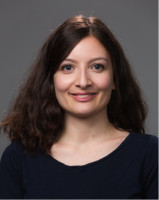Mental Health & Neurology
AXA Chairs
Germany
To Map the Structures, Circuits and Functions of the Brain, a Pioneer Explores Its “Terra Incognita”
In this case, the mapmaker’s tools include molecular genetics and cellular imaging. To learn more about aging, he will compare young and old brains, making Drosophila ideal for another reason: their lifespan is a mere 40 to 60 days. By mimicking human brain diseases in the flies, Prof. Ito can identify the relevant neurons and watch what happens over time. He’ll check the cells’ morphology, the distribution of synapses (the points of connection between neurons) and their ability to respond to stimuli. To shed light on neurodegeneration, he will analyze its effect on other cells. As one type of neuron is lost, others may also degenerate or they may develop more branches, more connections, to compensate, instead. Similarly, specific neurons could be implicated in drug and alcohol addiction. If specific candidates are found, the knowledge Prof. Ito is producing will be valuable for evaluating those cell types and their connections throughout the brain.
In the relatively simple brain of the fruit fly, only about 30% of neurons reside in zones that have been well analyzed, leaving a full 70% in Prof. Ito’s terra incognita. He offers a tourism metaphor to understand the necessity of pushing forward into unknown territory: A visitor may be satisfied with taking in just the highlights a country has to offer, but a sociologist wishing to truly understand its people needs to explore the small towns and villages in between. So it is with the brain. Prof. Ito emphasizes the fact that he and his team cannot explore alone. They will create the maps of the brain’s circuitry and share them immediately with the field, acting as a hub to stimulate collaboration. He knows he may discover fascinating corners of the brain along the way, but Prof. Ito plans to leave them to other researchers and keep on moving, as a pioneer should.
Prof. Kei Ito will take up his position as the AXA Chairholder “From Genome to Structure and Function” at the University of Cologne in the fall of 2016.
Scientific title: From Genome to Structure and Function
To add or modify information on this page, please contact us at the following address: community.research@axa.com

Kei
ITO
Institution
University of Cologne
Country
Germany
Nationality
Japanese
Related articles
Mental Health & Neurology
Post-Doctoral Fellowship
United Kingdom
A neurocomputational framework for mental health maintenance
Towards More Efficient Mental Health Therapy What do effective mental health treatments actually do? There is a pressing need to... Read more

Camilla
NORD
University of Cambridge
Mental Health & Neurology
Post-Doctoral Fellowship
United Kingdom
Impact On Wellbeing Of Exposure To Traumatic Material In “Back Office” Police And Law Enforcement staff
Protecting Justice Professionals from Trauma: Turning Research into Action for Mental Health and Wellbeing Professionals in the field of justice,... Read more

Fazeelat
DURAN
